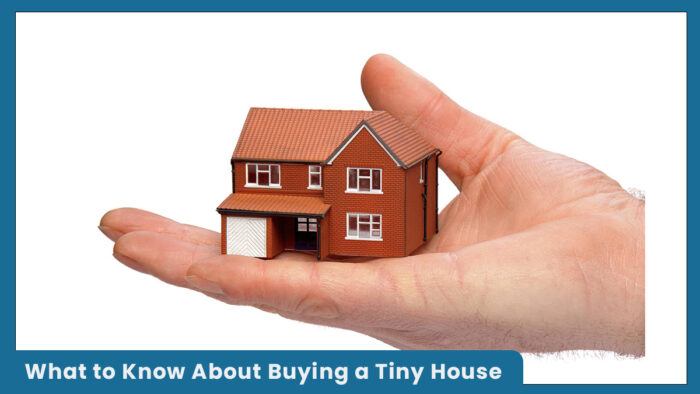What to Know About Buying a Tiny House – Buying a tiny house can be an affordable and low-maintenance path to homeownership, but it comes with its own unique challenges. From finding the right place to park or build it to figuring out how to finance it, there are a few key details to understand before diving into tiny living.

From finding the right location to securing financing, there are key factors to consider before making the leap. Here’s what you should know before buying a tiny home.
What is a Tiny House?
A tiny house is typically defined as a home that measures 400 square feet or less. This is significantly smaller than the average 2,300-square-foot single-family home.
Tiny homes generally fall into two categories:
- Tiny homes on wheels: Built on trailers, these homes offer flexibility and mobility.
- Tiny homes on foundations: These are often placed on private lots or used as accessory dwelling units (ADUs) beside a primary residence.
How Much Does a Tiny House Cost?
The price of a tiny home usually ranges between $30,000 and $100,000. The cost depends on factors such as size, design, materials, and amenities. While these homes are more affordable than traditional houses, there are extra costs to consider:
- Land: If you don’t already own a plot, you’ll need to buy or lease one.
- Utilities: Connecting to water, electricity, and sewer may require additional investment.
- Taxes: Tiny homes on foundations may be subject to property taxes, while homes on wheels may not be, depending on location.
Even for tiny homes on wheels, zoning rules may restrict where they can be placed, and you may need to pay for a designated space to park.
Where to Buy a Tiny House
You can buy a ready-to-move-in tiny home, a partially completed shell, or a DIY kit. Builders, both local and national, offer various models and floor plans. If you’re handy, a kit could be a budget-friendly option.
Before committing, it’s important to research local zoning codes and building regulations. These rules vary by city and state and can affect where and how you can place your tiny home.
How to Pay for a Tiny House
Financing a tiny home is different from financing a traditional house. Here are a few options to consider:
- Cash payment: Some buyers choose to save and pay in full.
- Personal loans: Unsecured loans from banks, credit unions, or online lenders can be used to finance a tiny home. Interest rates and terms vary based on credit.
- Builder financing: Some tiny home builders work with lenders to offer financing to buyers.
- Home equity: If you already own a home, you might use a home equity loan or line of credit to fund your tiny house.
- RV loans: If your tiny home on wheels qualifies as a recreational vehicle, you may be eligible for an RV loan.
While it’s technically possible to use a credit card, the high interest makes it a risky choice unless you plan to pay it off immediately.
Pros and Cons of Tiny Homes
Tiny homes have become a popular alternative to traditional housing, offering a simpler lifestyle and lower living costs. But while they can be charming and budget-friendly, they also come with some limitations. Here’s a quick look at the advantages and drawbacks to help you decide if tiny living is the right fit for you.
Pros
- Lower purchase price and upkeep
- Reduced utility bills and energy usage
- Easier to clean and maintain
- Customizable design options
- No property taxes (for homes on wheels)
- Increased mobility
Cons
- Financing may be harder to secure
- Land or parking space may need to be purchased or rented
- Zoning laws may limit where you can live
- Insurance may be more difficult to obtain
- Limited resale market
- Smaller space for storage and living
Bottom Line
Tiny homes offer a simpler, often more affordable way to own a home, especially for those seeking a minimalist lifestyle. But before making the move, it’s important to research your financing options, know your local regulations, and understand the trade-offs. Taking these steps will help you decide if tiny home living is truly right for you.



